There it was again. Wild is the Wind. Tragic, haunting, and melodramatic. It’s deeply soothing if you’re melodramatic yourself. But then again, so are Haider’s clothes.
There’s something about Ackermann’s choice of song that jolts you powerfully into the present moment, much like there’s something about seeing his shows that makes you jolt up and say ‘now this is real fashion’. And on a rainy Saturday morning on one of the last few days of fashion month, it was a much-needed jolt.
A look from Haider Ackermann AW17
With a similar devoted following of intellectuals and forward-thinking types, it’s perhaps no surprise that the last time this Nina Simone recording of the song was heard by this particular crowd was at Rick Owens’ show last season. The song itself was originally recorded by Johnny Mathis for the 1957 film of the same name, and has since been recorded by Simone, as well as David Bowie and George Michael, among others. British music journalist Peter Doggett calls it ‘an eerily placid investigation of romantic hypnosis’. There is a tragic, unsettling implication in the lyrics: ‘cling to me’, pleads the singer, ‘like the leaf clings to the tree', and yet the couple are ‘like creatures of the wind'. We all know what happens to two leaves blowing in the wind, and how fragile a dried leaf can be. It can be so very easily crushed.
This fragility, often misunderstood, has been a central theme of Ackermann’ s work, who once said in a 2011 feature in Interview: “People will say of my work sometimes that my woman looks like a warrior. Well, I had a feeling that she just wants to protect herself, which is a totally different approach. I actually think she feels very fragile.”
One of the most standout looks in the show, on Kati Nescher (below), demonstrated this strong-yet-fragile dichotomy, and Ackermann’s mastery for sartorial contradictions most beautifully. A relaxed-shape, generously sized ribbed black turtleneck sweater and delicate, otherworldly white feather trousers were offset by tight-fitting leather elbow-length gloves and sharp stilettos that exuded a military feel. The rest of the collection also played with this contrast – the white, the feathers, the softer silhouettes, all representing fragility and vulnerability. The razor-sharp tailoring, elongated, sculptural silhouettes, the black, the thigh-high boots, the leather and military touches reflecting the protection that lies in conformity. Even many of the models had a pale blank face accented with sharp, black, short haircuts.
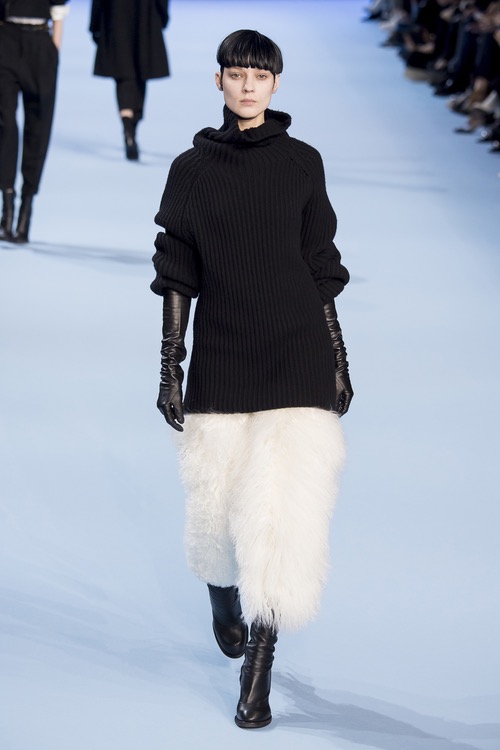
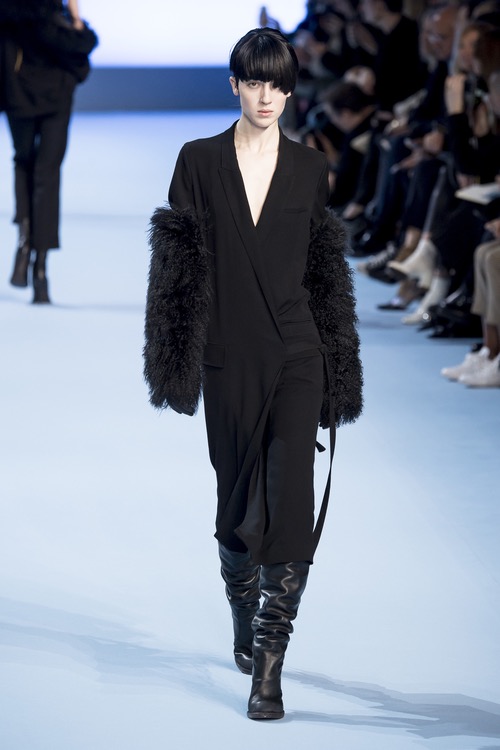
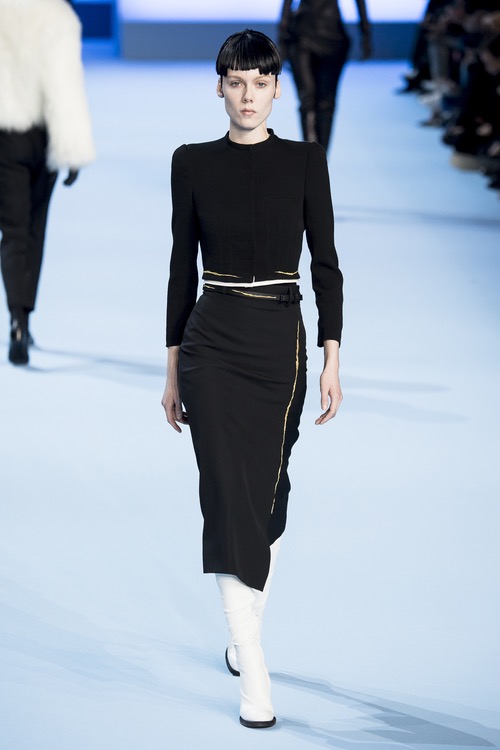
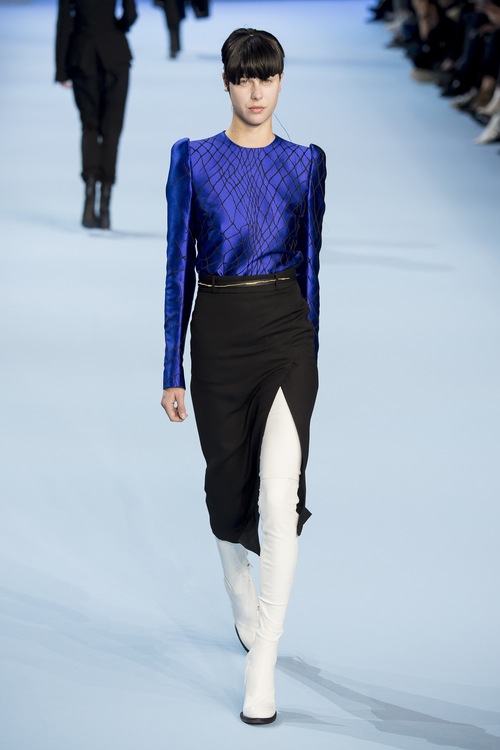
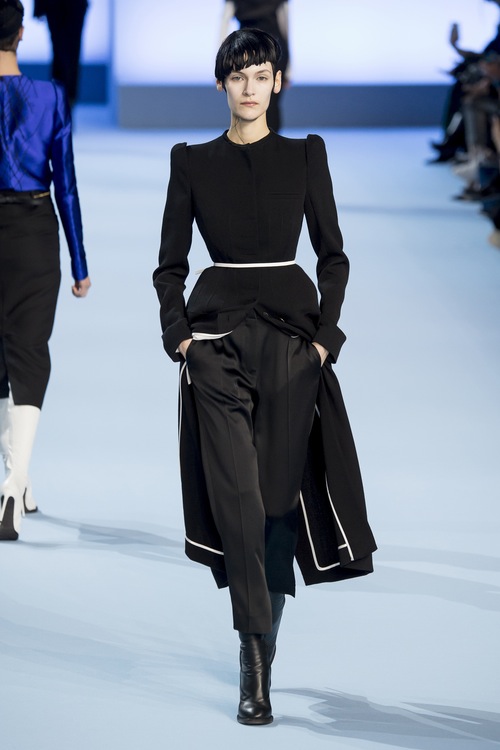
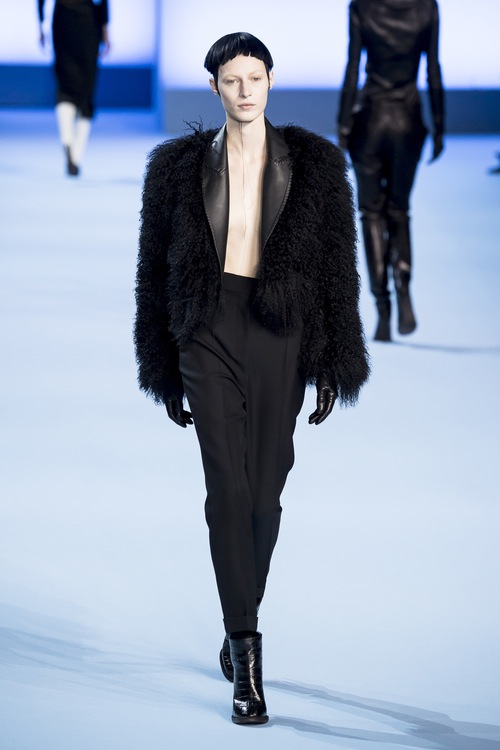
More than ever, this was a deeply satisfying collection that couldn’t resonate any better at time when the world is making it very hard for women to embrace their vulnerability. While women fight for their place as equals in society, fragility is often wrongly seen as succumbing to old stereotypes. We can thank Haider for the visually moving reminder that fragility is paradoxically what makes women strong. What makes all of us.
Photos: Vogue.com



